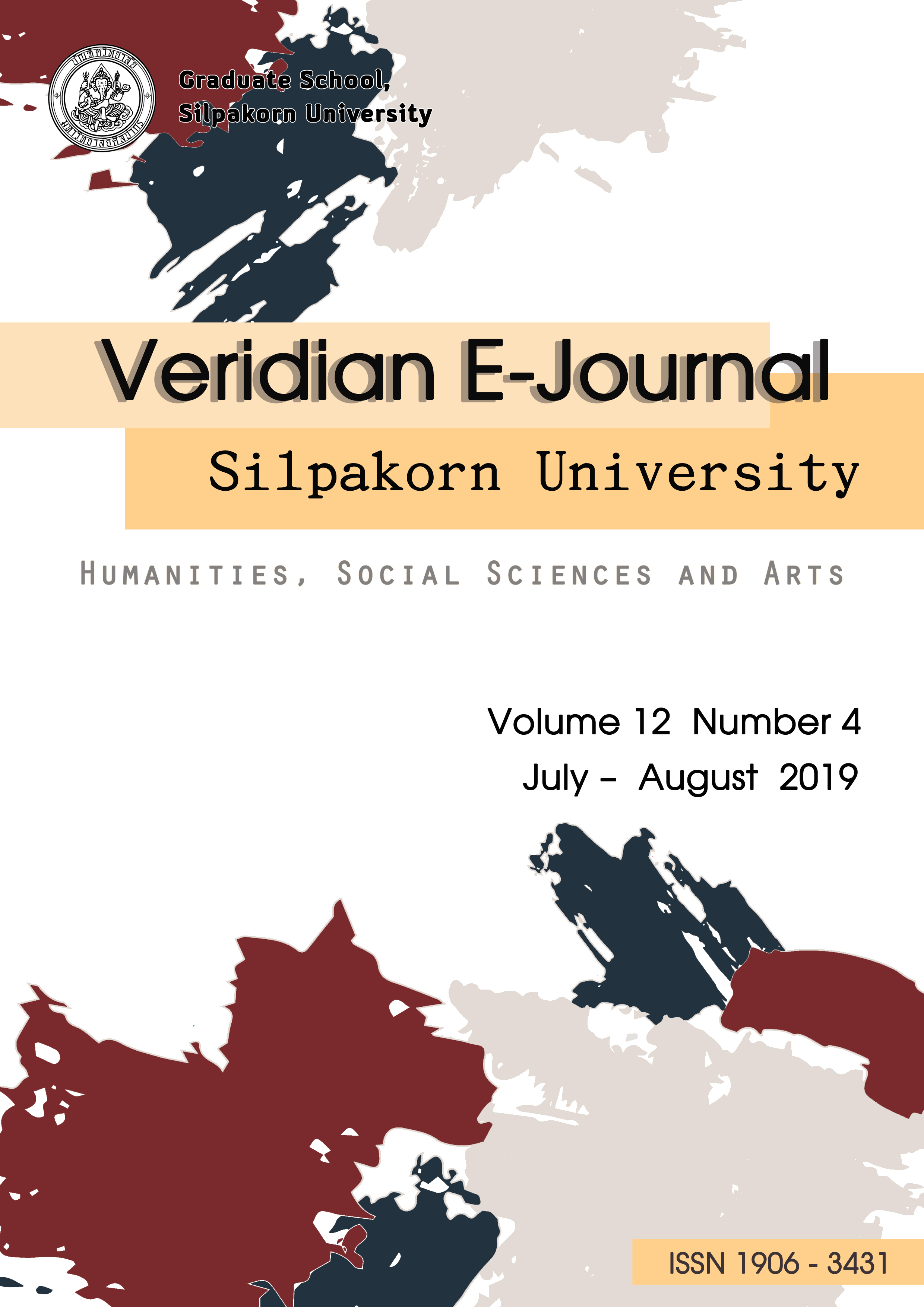นวัตกรรมระบบการประเมินเพื่อการพัฒนาความยั่งยืนของพลังงานชุมชนเชิงพื้นที่ (Innovative evaluating system for development of area-based sustainable community energy)
Main Article Content
Abstract
การวิจัยนี้มุ่งศึกษาการพัฒนาความยั่งยืนของพลังงานชุมชน เพื่อให้ชุมชนสามารถใช้วัตถุดิบหรือแหล่งกำเนิดพลังงานตามธรรมชาติในการผลิตพลังงานในรูปแบบต่าง ๆ ทราบองค์ประกอบและกระบวนการในการประเมินและพัฒนาความยั่งยืนของพลังงานของชุมชนในทุกขั้นตอน พัฒนาแบบจำลองนวัตกรรมระบบการประเมินเพื่อการพัฒนาความยั่งยืนของพลังงานชุมชนเชิงพื้นที่ รวมถึงตรวจสอบความสอดคล้องของแบบจำลองที่พัฒนาขึ้นกับข้อมูลเชิงประจักษ์ โดยมีตัวแปรสังเกตได้ 39 ตัวแปร เก็บข้อมูล 436 ราย ด้วยวิธีการสุ่มแบบชั้นภูมิและการสุ่มตัวอย่างแบบง่ายตามลำดับ จากองค์กรปกครองส่วนท้องถิ่น ที่ได้รับรางวัลการจัดการพลังงานครบวงจรยอดเยี่ยม ในแต่ละภูมิภาค คือ 1) ชุมชนคลองน้ำไหล จังหวัดกำแพงเพชร 2) ชุมชนท่ามะนาว จังหวัดลพบุรี 3) ชุมชนหัวนา จังหวัดหนองบัวลำภู และ 4) ชุมชนทุ่งสง จังหวัดนครศรีธรรมราช ทำการวิเคราะห์สถิติเชิงพรรณนา การวิเคราะห์องค์ประกอบเชิงยืนยัน และการวิเคราะห์สมการโครงสร้างของแบบจำลองที่สร้างขึ้น
ผลการวิเคราะห์พบว่าตัวแบบมีความสอดคล้องกับข้อมูลเชิงประจักษ์ โดยองค์ประกอบปัจจัยก่อนการดำเนินโครงการ ปัจจัยระหว่างการดำเนินงาน สามารถอธิบายตัวแปรการพัฒนาพลังงานชุมชนอย่างยั่งยืนได้ในระดับมาก นอกจากนี้พบว่าการพัฒนาพลังงานชุมชนให้เกิดความยั่งยืน ควรให้น้ำหนักกับปัจจัยระหว่างการดำเนินโครงการมากที่สุด โดยเฉพาะด้านการสื่อสารองค์การ รองลงมาเป็นการประสานงาน และวัฒนธรรมองค์การเชิงสร้างสรรค์ เนื่องจากมีอิทธิพลโดยตรงและอิทธิพลทางอ้อมต่อการพัฒนาพลังงานชุมชน ผลจากการวิจัยยังพบว่าช่วงก่อนเริ่มโครงการพลังงานชุมชน ต้องคำนึงถึงศักยภาพด้านพลังงานทดแทนของชุมชน อุตสาหกรรมและระบบเศรษฐกิจ ตามลำดับ เพราะมีอิทธิพลโดยตรงต่อขั้นตอนการเริ่มต้นโครงการพลังงานชุมชนและยังส่งผลทางอ้อมต่อการพัฒนาพลังงานชุมชนอย่างยั่งยืน
This research aims to study the sustainability of community energy. So that the community can use raw materials or natural energy sources to generate energy in various forms, components, and processes for evaluating and developing the sustainability of the energy of communities at every step. Then develop a model of the innovative evaluating system for development of area-based sustainable community energy. Including verify the consistency of the model developed with empirical data with 39 observed Variables, the sample size was 436 derived from stratified sampling and simple random sampling respectively, from the local government organization that won the best energy management award in each region (Kamphaeng Phet, Lop Buri, Nong Bua Lam Phu, and Nakhon Si Thammarat). Perform descriptive statistical analysis, confirmatory factor analysis (CFA) and structural equation model Analysis (SEM).
The finding showed that the model was consistent with empirical data. All factors; factors before the project implementation and factors during operation can explain variables of sustainable community energy development at a high level. In addition, it was found that the development of community energy for sustainability should give the most weight to the factors during the project implementation. Especially organizational communication followed by coordination and creative organizational culture. Because of direct influence and indirect influence on community energy development. The results of the research also found that before the start of the community energy project must consider respectively the potential of renewable energy of the community Industry and economic systems. Because it has a direct influence on the process of starting a community energy project and indirect affects sustainable community energy development.

